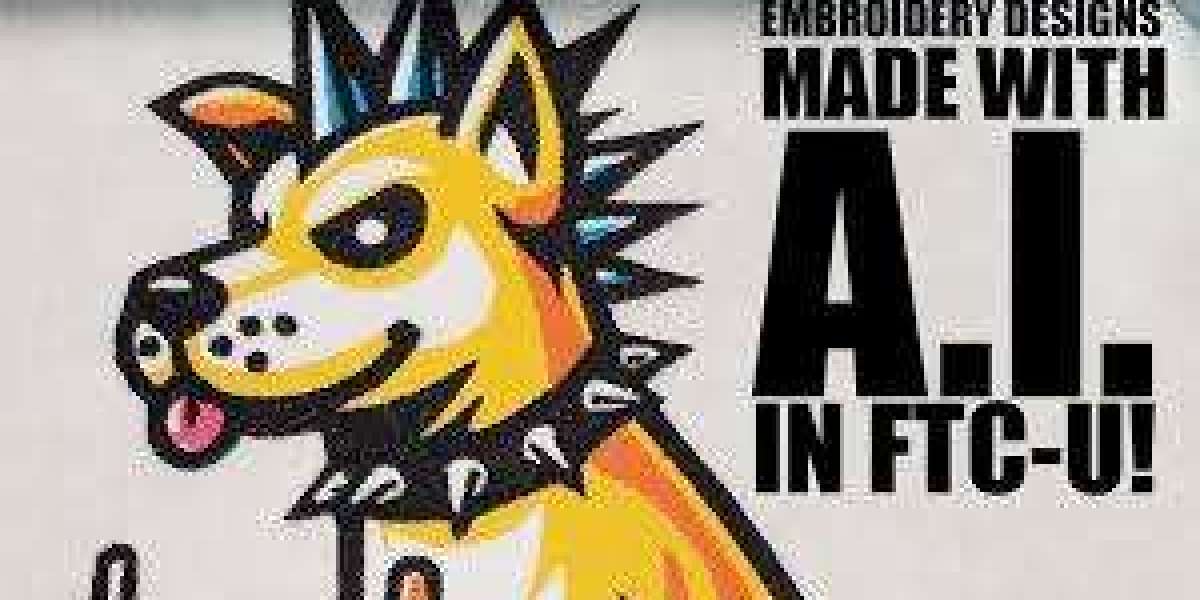Introduction
The world of fashion has always been a dynamic blend of creativity and innovation. Today, it's evolving faster than ever before, thanks to the fusion of artificial intelligence (AI) and embroidery digitizing. As consumers increasingly crave personalization and uniqueness in apparel, embroidery digitizing has stepped up with AI-backed solutions that cater to custom designs at scale. This emerging synergy is shaping personalized fashion into a smart, tech-forward industry.
This article dives into how AI is transforming embroidery digitizing and why it's becoming an essential tool for fashion brands, embroidery service providers, and digital artisans.
Understanding Embroidery Digitizing
Before we explore its AI transformation, let’s revisit what embroidery digitizing entails. Embroidery digitizing is the process of converting artwork, logos, or designs into a digital file that an embroidery machine can read. The digitized file instructs the machine on stitch types, directions, densities, and sequence.
Traditionally, this process required skilled professionals and considerable time investment. Mistakes during digitizing often led to wasted fabric and increased production costs.
The Role of AI in Modern Embroidery Digitizing
AI has redefined the digitizing process in several ways:
1. Automatic Stitch Prediction
AI-driven software can analyze design patterns and predict the most efficient stitch types automatically. It eliminates guesswork, improving accuracy and efficiency.
2. Intelligent Pathing
With AI algorithms, the stitching path can be optimized to reduce machine run-time, thread breaks, and production time. This not only speeds up the process but also enhances output quality.
3. Error Detection & Correction
AI tools identify common issues like stitch overlap, gaps, or loose fills and fix them before the design hits the embroidery machine. This significantly reduces production errors.
4. Style Adaptation Based on Fabric Type
Smart embroidery digitizing software can auto-adjust designs based on fabric texture, stretchability, and thickness, ensuring high-quality results across diverse materials.
Personalized Fashion: A Booming Trend
Consumers today are seeking one-of-a-kind garments that reflect their personality. Whether it's a custom monogram, a pet portrait on a denim jacket, or a family crest on a tote bag, personalization has gone mainstream.
AI-backed embroidery digitizing enables:
Mass customization
Faster turnaround times
Lower costs for individual orders
Brands can now offer personalized collections without the burden of high overhead.
Case Studies: AI + Embroidery in Action
Case 1: E-commerce Fashion Startups
Many startups offer fully customized products, such as embroidered hoodies with AI-designed avatars. AI-powered digitizing tools enable them to convert thousands of customer-uploaded images into machine-ready embroidery files within minutes.
Case 2: Print-on-Demand Marketplaces
Platforms like Etsy and Zazzle now include embroidery options. Sellers use AI embroidery digitizers to transform user-submitted graphics into polished embroidery files without needing professional training.
Case 3: Sustainable Fashion Brands
Eco-conscious companies are using AI-optimized digitizing to reduce fabric waste and make their production cycles leaner and greener.
Benefits of AI-Driven Embroidery Digitizing
| Feature | Benefit |
|---|---|
| Speed | Reduces design-to-production time from hours to minutes |
| Accuracy | Eliminates human errors and ensures consistent quality |
| Cost-effectiveness | Lowers labor costs and optimizes machine usage |
| Scalability | Handles bulk orders without compromising quality |
| Customization | Enables hyper-personalization at scale |
Top Tools and Platforms
Several embroidery digitizing platforms now integrate AI capabilities:
Wilcom Embroidery Studio
Hatch by Wilcom
Embrilliance Software Suite
Brother PE-Design
These tools feature intuitive interfaces, automated stitch generation, and real-time previews to accelerate the digitizing process.
The Future of Embroidery Digitizing
We’re just at the beginning of the AI revolution in embroidery. Future advancements may include:
AI Design Suggestions: Offering design variations based on current trends
Voice-to-Stitch Integration: Embroidery patterns generated via voice commands
Real-time Fabric Simulation: Visualizing how a design will appear and behave on specific fabrics before production
Such innovations will empower creators, reduce costs, and enhance customer satisfaction.
Challenges to Consider
While promising, AI in embroidery digitizing isn’t without hurdles:
Initial Software Cost: High-end AI software may be expensive for beginners.
Learning Curve: Though AI simplifies many tasks, users still need basic embroidery knowledge.
Creative Constraints: Some unique artistic effects may still require manual adjustments.
Conclusion
The convergence of embroidery digitizing and AI is revolutionizing the personalized fashion industry. By automating design creation, reducing production times, and enhancing accuracy, AI is making embroidery more accessible and profitable than ever.
Whether you're a small business, hobbyist, or large-scale fashion brand, embracing AI-powered embroidery digitizing tools can elevate your design process and meet the rising demand for customization.
The future of embroidery isn’t just digital—it’s intelligent.







